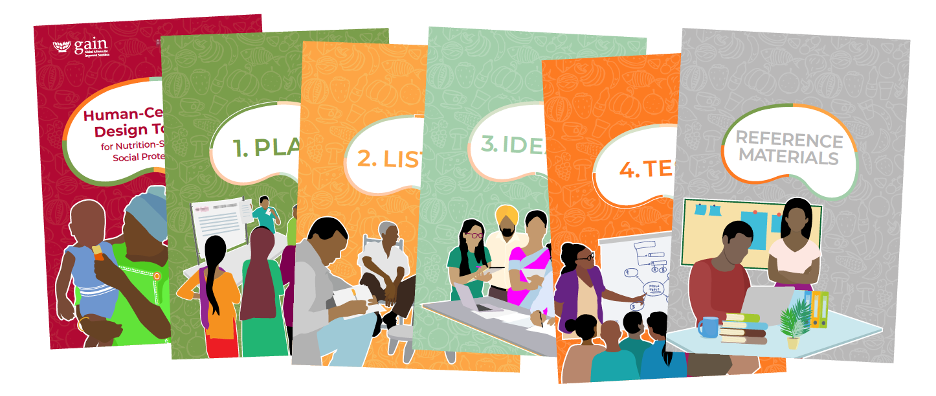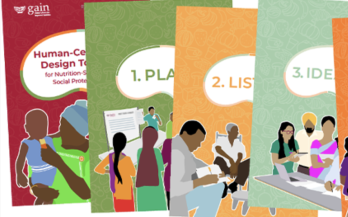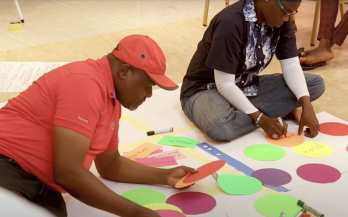Human-Centered Design (HCD) can help social protection administrators better design for beneficiaries’ nutritional needs. HCD is a set of approaches, methods, and mindsets that can be used to develop innovative solutions by placing the end-user firmly at the core of the design process. Rooted in empathy for the user’s experience, HCD makes space for creative exploration of new ideas and iterative testing and improvement of potential solutions based on users’ input. In social protection contexts, HCD can amplify the voices of the beneficiaries in design processes, and give administrators robust insight into the solutions that can be most effective for reaching their nutrition objectives.
GAIN has developed an HCD Toolkit that offers governments and other system actors a consolidated set of resources to support the effective adoption and mainstreaming of HCD in social protection systems. The Toolkit can be used in design processes to overcome the traditional obstacles that actors face in engaging beneficiaries, enabling more meaningful and productive integration of their perspectives in social protection design processes. The Toolkit offers administrators complete, context-adaptable guidance for integrating HCD into their design processes in the form of three complementary resources:
- An HCD ‘Toolbox’ consisting of 21 distinct, customisable tools spread across four process phases: Plan, Listen, Ideate and Test
- A selection of pre-defined design ‘Journeys’, based on the users’ unique objectives, that provide a blueprint for designing their HCD process and selecting the tools relevant to their context
- A comprehensive Facilitator Manual and Context Adaptability Guide that offers detailed insight into HCD process implementation and guidance for tailoring the tools to meet users’ specific needs
Contact us

Anthony Wenndt
Technical Officer


